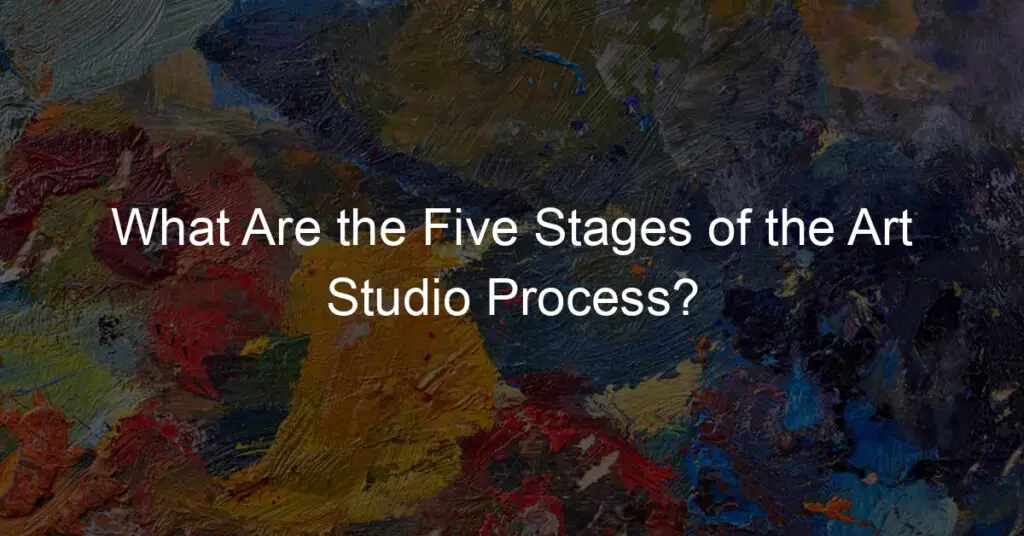The creative process is a fascinating journey that artists embark on while transforming raw ideas into memorable visual experiences. A crucial aspect of this journey is the art studio process, which typically follows a series of stages. By understanding the five stages involved in the art studio process, artists can enhance their workflow and deepen their connection with their craft.
Artists begin with the ideation stage, where they explore various concepts and potential themes for their artwork. This stage might involve researching relevant topics, sketching ideas, or gathering inspiration from the world around them. As the project progresses, artists will engage with the development stage, refining their initial ideas and starting to experiment with materials, techniques, and composition. It is during this phase that the artwork starts to take shape and evolve.
The execution stage is where the artist’s vision comes to life, as they diligently work on creating the piece itself. This stage involves the physical act of making art, whether it’s painting, sculpting, or working with digital tools. Throughout the art studio process, artists continuously refine their work while remaining open to change and adaptation, ensuring that the final outcome is a true reflection of their artistic intention.
Exploring Ideas and Inspiration
When artists embark on their creative journey, the first stage typically involves exploring ideas and seeking inspiration. This initial phase is critical in developing a concept and laying the groundwork for their artwork.
Diverse Influences
It is important for artists to expose themselves to a range of subject matter and cultural influences. By researching various art forms, techniques, and traditions, artists can gather a wealth of ideas that will spark their imagination and lead to more innovative concepts. Fostering this cognitive diversity allows them to authentically express their unique voice and vision.
Some ways artists can expand their research horizons include:
- Visiting art galleries and museums
- Attending cultural events and festivals
- Exploring different artistic mediums (e.g., painting, sculpture, photography)
- Engaging with works from diverse art movements and historical periods
Visual Diary
To document their creative journey and the development of their ideas, artists often keep a visual diary. This is a space where they can record their thoughts, sketch out rough drafts, and collect visual references relevant to their project.
A visual diary is a valuable tool that helps artists:
- Keep track of their ideas and sources of inspiration
- Reflect on their progress and artistic growth
- Create a visual timeline that showcases their thought process
- Easily revisit and refine their ideas
Artists utilize various brainstorming techniques and preparation methods to expand and enhance their creative process. By drawing upon diverse influences and maintaining a visual diary, they can effectively explore ideas and find the inspiration needed for their artwork.
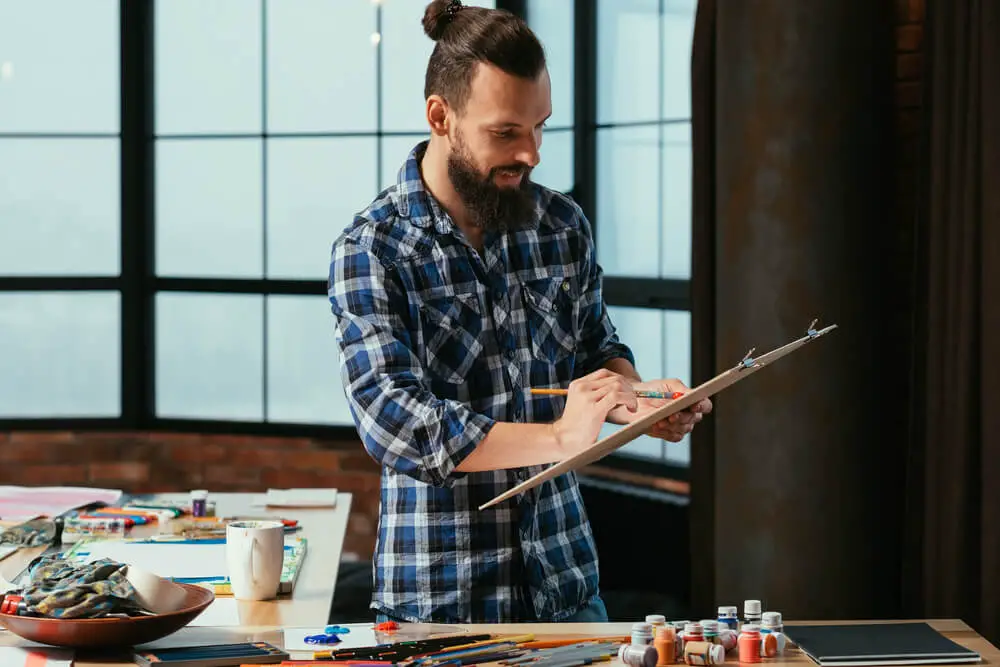
Development and Experimentation
Technique Exploration
During the development and experimentation stage, artists explore various techniques and processes to find their unique style. This process can include making sketches or experimenting with different materials. It is essential to remain open-minded and willing to explore new approaches. Each artist can have their preferences, such as working with paint, music, writing, or other mediums.
Some ways to experiment with techniques include:
- Trying different brush strokes with paint
- Experimenting with collage or mixed media
- Utilizing digital tools or software
Composition and Medium
Composition refers to the organization of elements within an artwork, such as colors, shapes, objects, and concepts. During the development stage, artists experiment with different compositions to create a visual blueprint for their piece.
Choosing the correct medium is essential, as it greatly impacts the final result of the artwork. Some mediums allow for more flexibility and experimentation, while others may require a more refined approach. Understanding the properties of various materials can enhance an artist’s ability to create a more cohesive piece.
| Medium | Properties |
|---|---|
| Paint | Can be applied with various tools; allows for color mixing |
| Music | Incorporates pitch, rhythm, and dynamics |
| Writing | Utilizes language, tone, and structure |
| Sculpture | Focuses on three-dimensional form and space |

Process Art
Process art is an approach that emphasizes the act of creation over the final product. It encourages artists to focus on exploring ideas, techniques, and materials during the development stage. This mindset can lead to unexpected discoveries and a deeper understanding of one’s creative process. It may incorporate:
- Experimental processes
- Unconventional materials
- Collaborative work with other artists
By embracing process art, artists can gain new insights into their practice and enhance their overall skills. This approach encourages constant growth and evolution in artistic expression.
Incubation and Percolation
Subconscious Creativity
During the incubation stage, an artist’s subconscious mind takes the lead in developing and expanding upon ideas. This period allows the unconscious mind to process the gathered information, reflections, and discoveries. The simmering of thoughts enables the artist to form new connections, leading to innovative ideas and perspectives. It is crucial for creatives to allow their minds to wander freely and explore different possibilities without the constraints of analytical thinking.
Period of Time
The duration of the percolation stage varies for each artist and project, as it relies on individual creative processes and project complexities. This stage is particularly essential to ensure that ideas mature and solidify before moving forward to execution. Allowing sufficient time for incubation and percolation helps artists:
- Reflect on their concepts and amalgamate various elements to create a cohesive piece.
- Discover new techniques, media, or perspectives that will enhance their artwork.
- Develop a more profound understanding of the initial concept and its implications in the broader context.
During this phase, it is vital for the artist to remain open to change and be ready to adapt their ideas as they evolve. The incubation and percolation period serves as a crucial bridge between inspiration and execution, setting the groundwork for the final piece.
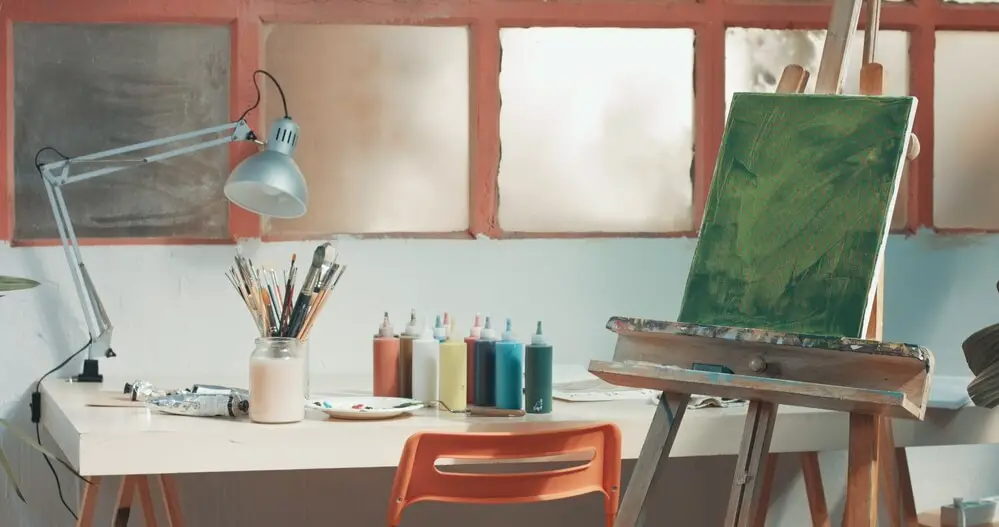
Feedback and Reflection
Studio Practice
Feedback is crucial in the studio process, as it allows artists to gauge the effectiveness of their works and refine their techniques. By receiving critique from peers, instructors, and even from themselves, artists are exposed to diverse perspectives and can adapt their work accordingly.
Studio practice is where an artist works on their craft and develops their individual ideas. Through the integration of feedback in their studio practice, they can evolve their work and push their creative boundaries. This process often involves the exploration of various media, techniques, and conceptual possibilities to enrich the artistic experience.
Brainstorming
Another essential factor in the art studio process is brainstorming. It refers to the generation of new ideas and creative solutions by discussing and sharing thoughts with others. This collective thinking encourages the consideration of different perspectives and sparks inspiration for artists.
During the brainstorming stage, artists can develop an exploration proposal or work plan. This provides a clear roadmap, guiding the creative process and setting goals for improvement. The feedback received during brainstorming can help artists refine their ideas, ensuring that they can effectively communicate their intended message and explore their full artistic potential.
By implementing feedback and reflection in both studio practice and brainstorming, artists can continuously improve their work and successfully navigate the complexities of the art studio process.
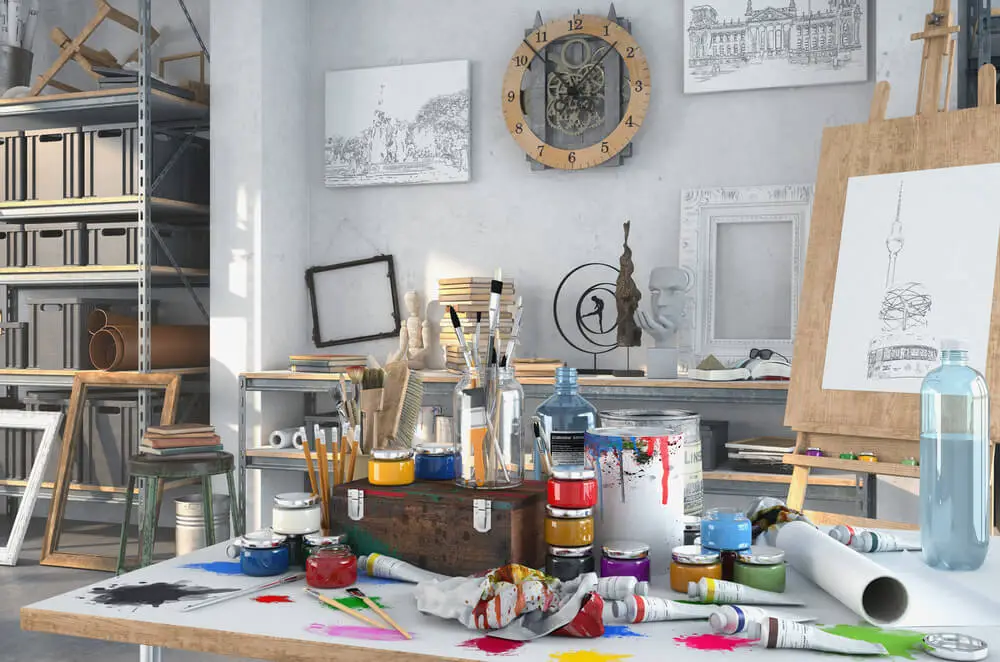
Refining and Resolution
Potential Directions
During the refining stage, the artist explores potential directions for the artwork and dives deeper into their creativity. This period of time is crucial, as it allows the artist to test various concepts and influences before landing on a clear resolution for their art piece. By experimenting with different objects and materials, such as clay or other process art techniques, artists can discover new ways of expressing their artistic vision.
For instance, an artist might consider the following possibilities while refining their work:
- Incorporating elements inspired by various artistic influences or historical periods
- Exploring new concepts and themes through a range of materials and techniques
- Experimenting with the use of color, texture, and composition within the artwork
Thus, the refine stage enables the artist to develop a deeper understanding of their art-making methods and potential paths for the project.
Milestone Achievement
Once the artist has explored possible directions in the refining stage, they can begin to make crucial decisions within their work. The milestone achievement sub-section acknowledges the transition from refinement to resolution of the artwork. During this phase, the artist will:
- Identify the most effective methods and techniques for their chosen concept
- Begin to solidify the overall vision for their artwork, taking into account previous influences and learnings
- Utilize specific materials, techniques, or objects—this may include process art forms or traditional mediums like clay—to reach their desired end result
Through milestone achievement, the artist is able to witness the culmination of their art-making journey—an essential part of the five stages of the art studio process.
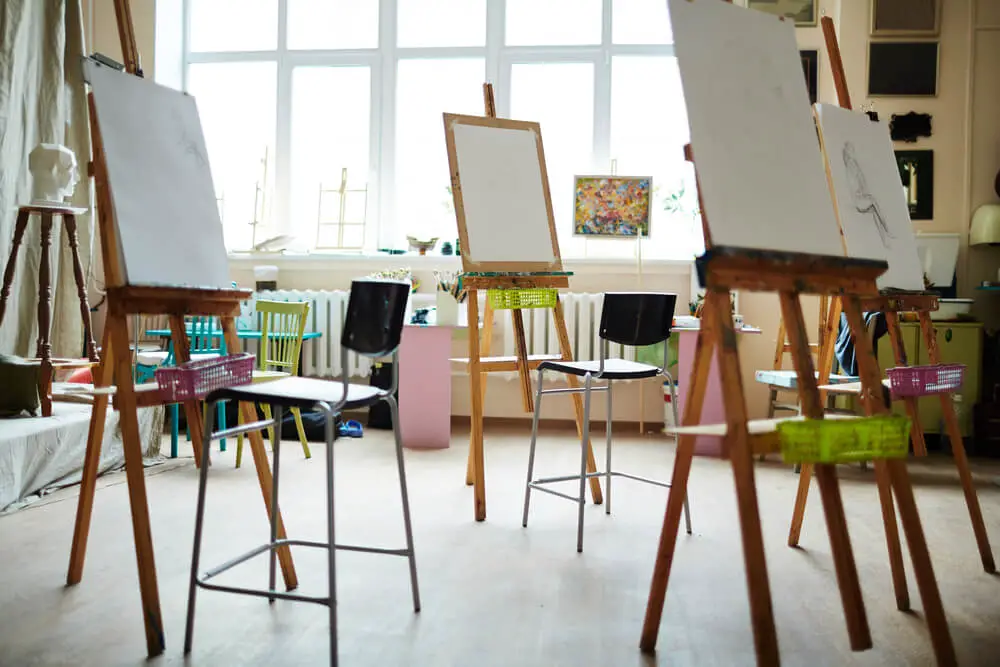
Frequently Asked Questions
What are the key steps in the studio art process?
The studio art process generally follows the five-stage model: (1) ideation or concept development, (2) research and planning, (3) sketching or preliminary work, (4) execution of the final piece, and (5) evaluation or critiquing.
How do artists go through the process of creating a piece?
Artists initiate the creative process by generating ideas or responding to a specific theme or inspiration. They then conduct research, gather resources, and create a plan to bring their concept to life. During the sketching or preliminary stage, artists test layouts, color combinations, and other aspects of the work before settling on a final design. The execution stage involves the actual creation of the artwork using the chosen method and materials. Once completed, the work is evaluated by the artist and possibly others, providing an opportunity for reflection and improvement.
What are the essential components of the creative process in art-making?
The essential components of the art-making process include: (1) inspiration, (2) exploration, (3) experimentation, (4) problem-solving, and (5) self-critique. Each component contributes to the overall success of the work, and all artists approach these elements differently based on their individual styles and goals.
How does the studio art process differ between mediums?
The studio art process may vary depending on factors like medium, technique, and individual artist preferences. For example, a painter’s process may differ from that of a sculptor due to the nature of the materials used, such as paint and brushes versus clay and carving tools. Additionally, digital artists or mixed-media artists might have distinct methodologies based on technological components and the integration of various forms.
How does the creative process unfold in entrepreneurship?
In entrepreneurship, the creative process is similarly driven by idea generation, research, and planning. The ideation phase focuses on identifying a problem or opportunity and designing a product or service as the solution. The research and planning stages involve market analysis, financial forecasting, and logistical considerations. The execution stage is marked by prototyping, beta testing, and launching. Lastly, evaluation is performed through measuring success, gathering feedback, and making adjustments for improvement.
What are the main elements involved in understanding and appreciating a work of art?
Understanding and appreciating a work of art involves examining its (1) visual components, such as color, composition, and line work; (2) technical aspects, including the medium and materials used; (3) contextual elements, like the historical, social, and cultural circumstances surrounding its creation; and (4) personal viewpoint, which considers each individual’s experience, beliefs, and emotions when interacting with the artwork.

